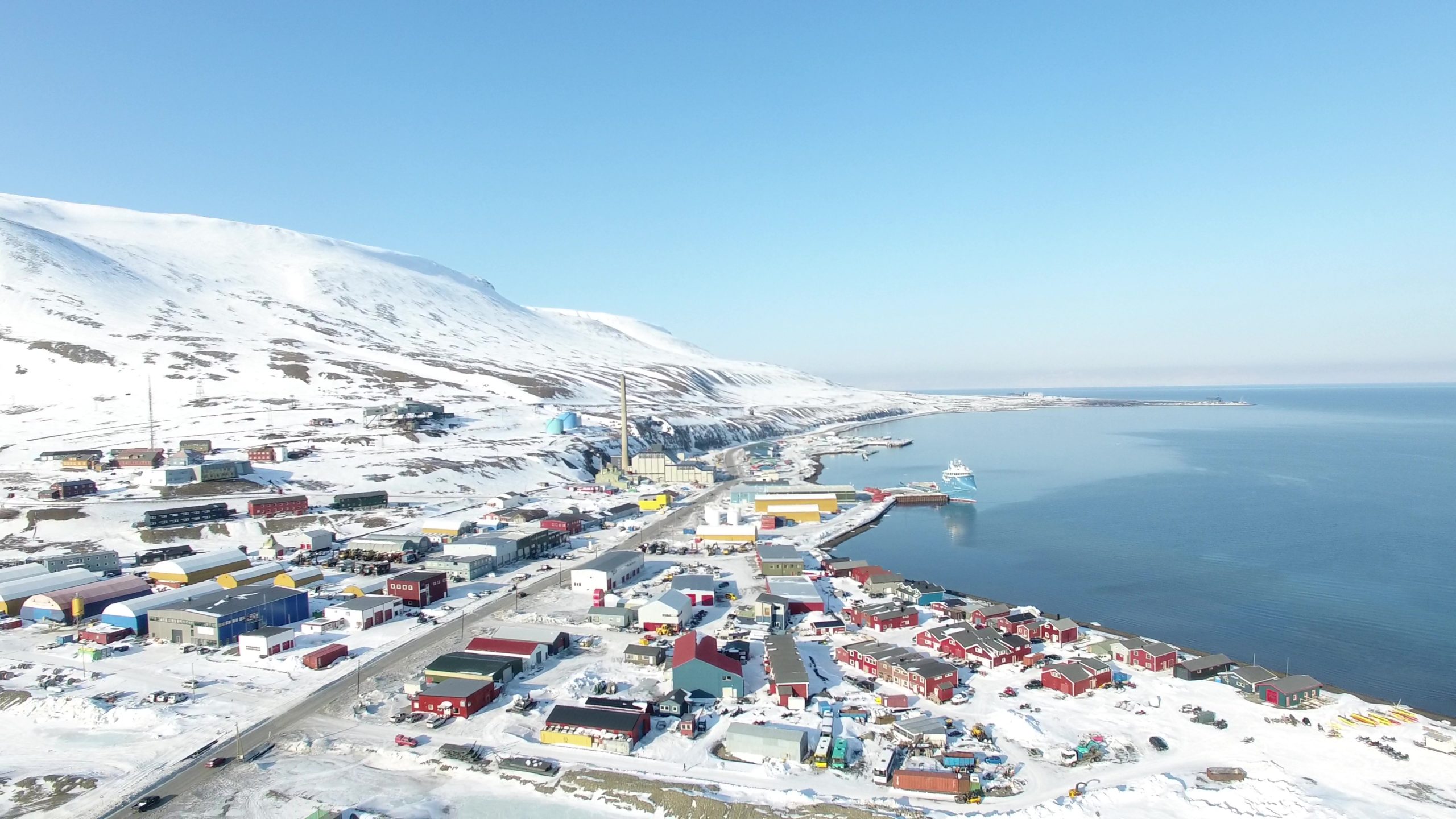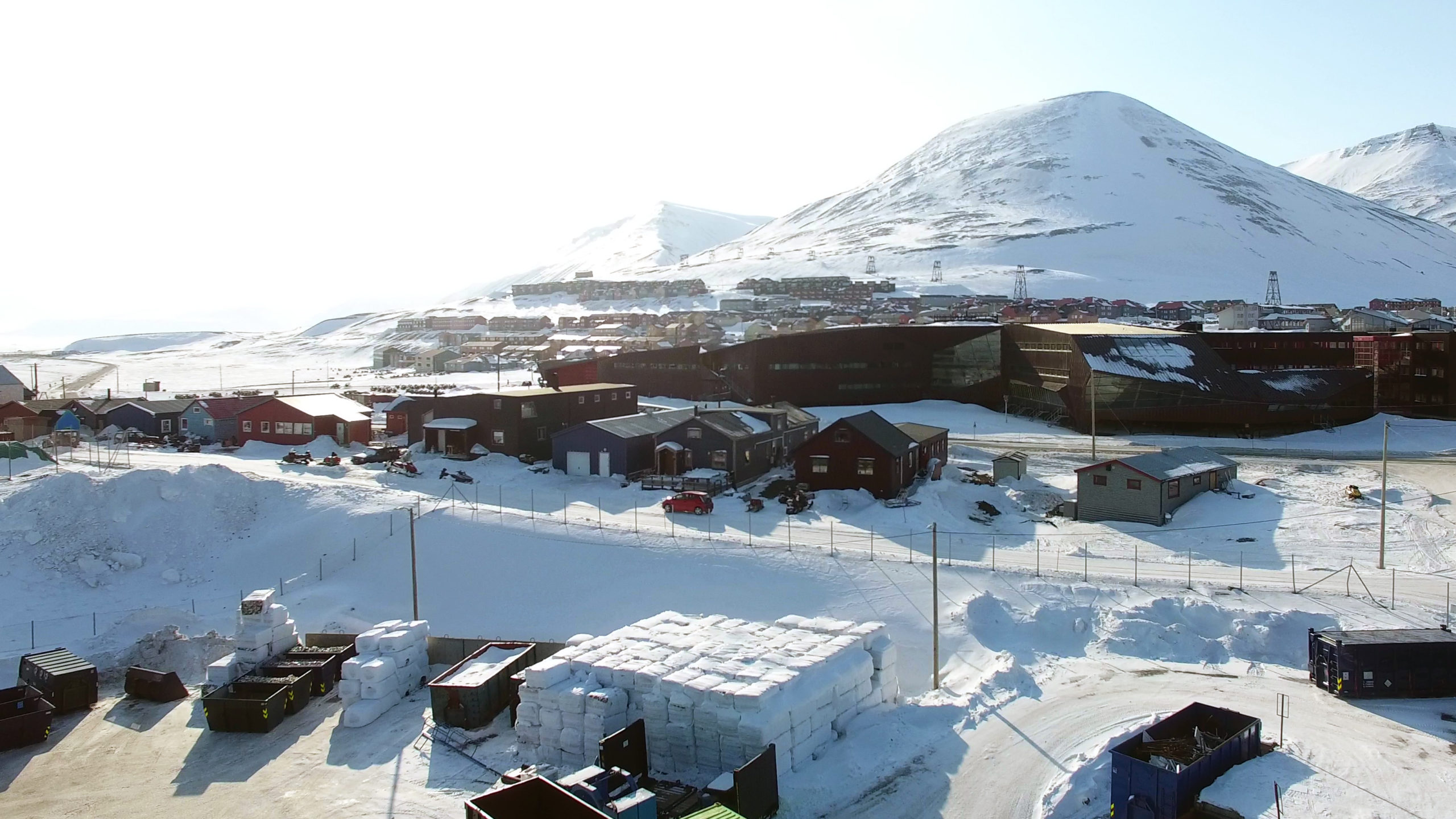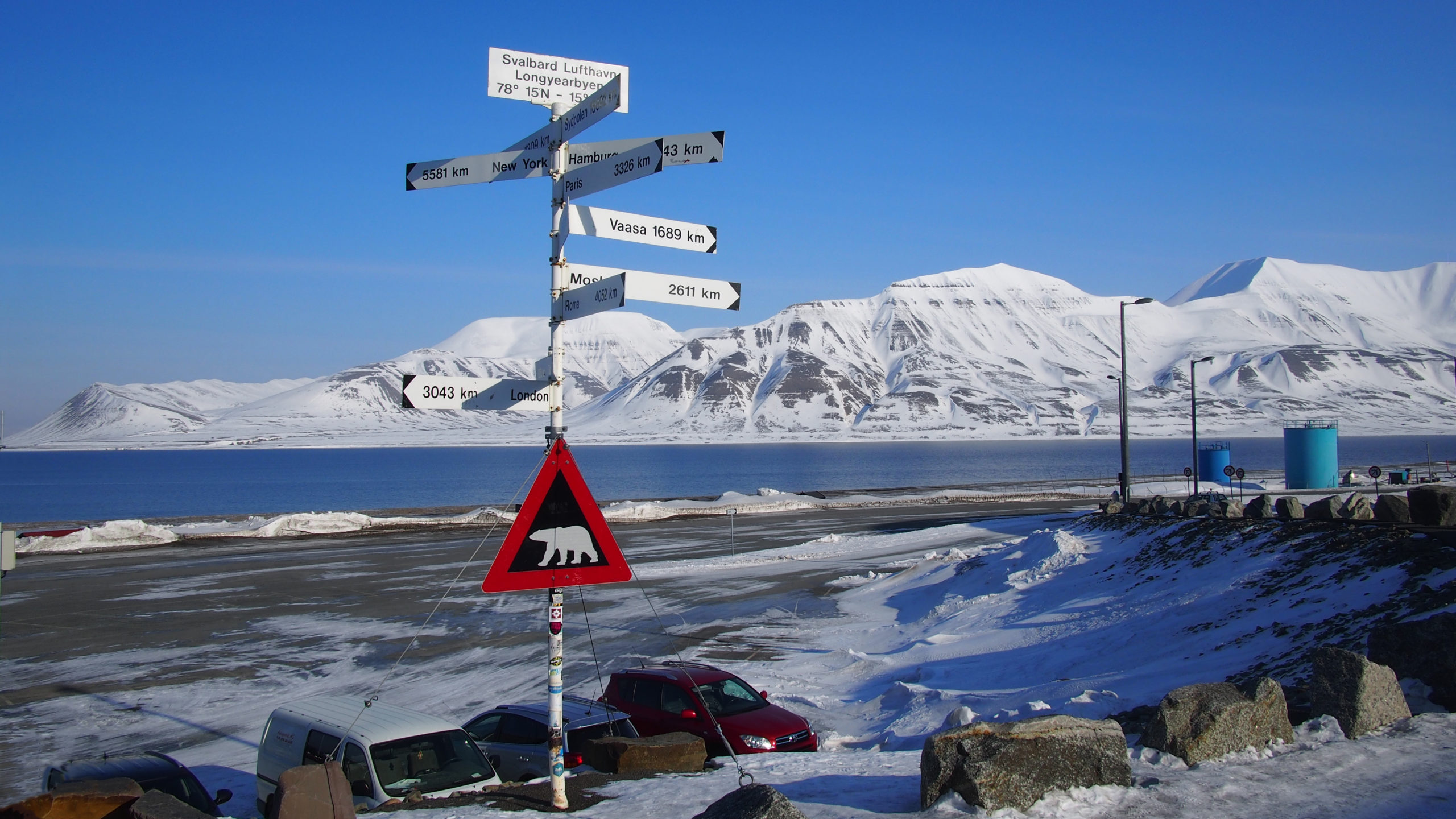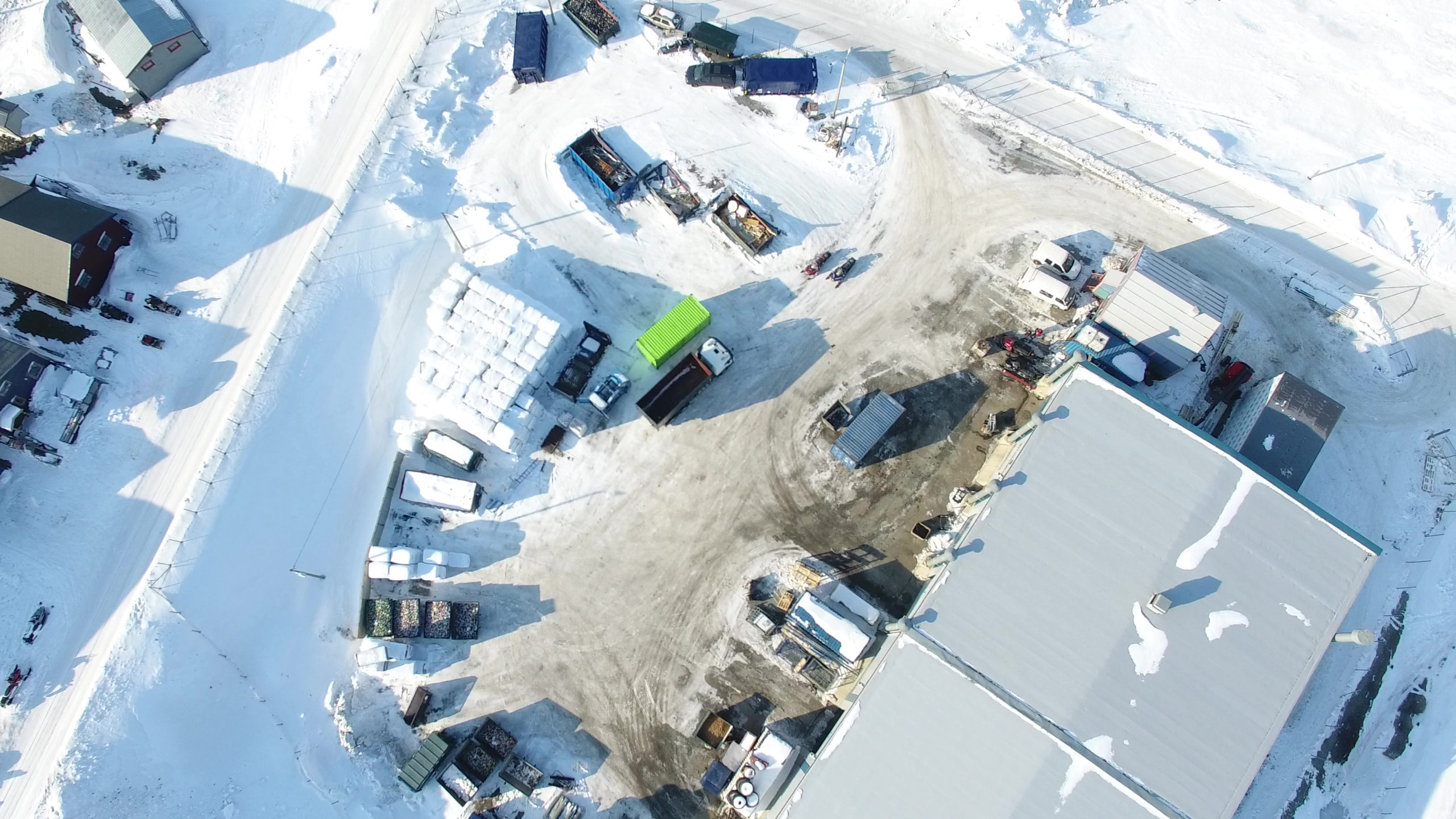Blog
The northernmost delivery: Case Svalbard
The northernmost delivery: Case Svalbard
Cross Wrap has delivered hundreds of bale wrappers worldwide, wrapping a wide variety of waste and reject materials. Cross Wrap´s unique bale wrapping method is relied on in more than 65 countries. Our machinery is delivered and installed all around the world. The deliveries reach from Australia in the east to the sunny California, USA in the west and from the coast of South Africa in the south to the Norwegian archipelago in the Arctic Ocean.
This is the story of Cross Wrap´s northernmost delivered CW Direct Bale Wrapper, which found its home in the Norwegian archipelago Svalbard. Up to this date, Cross Wrap has made two deliveries to Svalbard.
The northernmost continually occupied settlement in the world

Surrounded by ice – at the tip of The North Pole Svalbard archipelago has the distinction of being the northernmost continually occupied settlement in the world. The population changes seasonally but there tends to be around 2,550 people living in Svalbard in 2021. The islands are part of Norway but are covered by the Svalbard Treaty, which gives equal rights to engage in commercial activities to the 46 signatories. Longyearbyen is Svalbard´s administrative center.
60% of Svalbard’s landmass is permanently covered by glaciers and snowfields, and less than 10% has any vegetation. The extraordinary light on Svalbard varies between the Polar Night, Twilight period and the Midnight Sun. July is the warmest month with average temperatures between 3 – 7 °C. It’s not uncommon to have long periods during the winter where temperatures drop below -30 °C. The sparse precipitation and the absence of trees makes the area characterized as the Arctic desert.
Svalbard is also known as one of the Arctic Regions wildlife hotspots with around 3 000 polar bears and other arctic creatures. Nearly two thirds of the archipelago is protected, and it consists of several nature reserves, national parks, and bird sanctuaries established to safeguard nature and wildlife.
Waste management in Svalbard
Despite the fact that the archipelago is sparsely populated, there are still many local sources of pollution which come from the settlements, mining, research, tourism, and long-range transport. Industry, power production, tourism and other activities are strictly regulated by laws, regulations, and individual permits given by the Governor of Svalbard. The regulations are issued by the Ministry of Climate and Environment and are designed to prevent and possibly minimize potential emissions and pollutants, for example storage of hazardous waste, petroleum products and other chemicals or discharging of wastewater.

Waste management for households and commercial waste is very strict and regulated separately. The Regulations Relating to Pollution and Waste in Svalbard highlights, for example, a regulation of households´ and commercial waste delivery and storage and waste facility operating. The Governor of Svalbard may also issue regulations for certain types of waste and its collection, separation, and delivery to waste management facility.
A time of change for the waste treatment on the island
Because of the accurate waste treatment process on the archipelago, all household waste must be collected, delivered to the waste plant in Longyearbyen, stored, and shipped to the mainland for a waste-to-energy process. The waste plant was in a need for a better storage and transportation solution for loose waste, and the plant´s first CW Bale Wrapping machine was purchased and installed in 2007 to increase efficiency in packaging.
“I visited Svalbard several times during my career at Cross Wrap. It was a close community – the place was so small, with only 40 kilometers of road and everybody knew each other well. My first machine´s installation was in May and lasted a week. It was still cold outside. I felt it most when the wind blew from the North Pole”, tells Juha Nuutinen, Aftersales Director at Cross Wrap.
In 2007 it was a time of change for the waste treatment on the island. Svalbard shifted from loose waste transportation to the transportation of baled and wrapped waste for its further treatment on the mainland. That time the waste plant was small and bale wrapping capacity was a 7 bales per day. However, it was an important step in Svalbard´s waste management.
“The hotel´s hall I lived in was decorated with a real gigantic stuffed polar bear. The polar bears were the reason why all first-floor windows had a metal bars and residents needed to carry a gun”, Juha describes.

“The snowmobile is the most common transport on the island. One night I looked up at the huge parking area above the village and saw all snowmobiles were parked there very tight. I couldn´t guess the reason for them being left up there when suddenly I have got an explanation from the locals. It was an ordinary security action in a case of polar bear visits. The snowmobiles´ seats are made of skin and the smell of skin might be attractive for the bears and parking the snowmobiles away from housing prevents them from coming to the village. The fear of polar bears was concrete and realistic”, Juha tells.
Direct Bale Wrapper´s delivery
There were several installation and maintenance visits to Svalbard during that time. Cross Wrap team´s members are still remembering the machines´ installation and time they spent on the island. Another Wrapper was purchased in 2017. This time it was the CW Direct Bale Wrapper, which wraps the bales without bale wires.
The Direct Bale Wrapper reached its final destination in Svalbard and was delivered by cargo ship in April 2017. The whole delivery process was under the supervision of Alles Miljø – the quality supplier delivering solutions for waste and recycling in Norway.

“The place was unique, there was a lot of snow, ice, and massive white mountains around. It was the most exotic place I have ever visited during my career at Cross Wrap. The first thing that I saw when I stepped out of the plane was a warning sign about the polar bears”, says Janne Koivumäki, Cross Wrap´s automation engineer.
In 2017 the population of the island was around 2000 people, and the number of polar bears was around 4000. The Bale Wrapper´s installation lasted 11 days. The plant itself was small and employed about 5-7 workers.
“Me and my colleague lived in the in small barracks near the plant. On our free time we did an observing trip around the village, visited the World seed bank, and tried the local delights, like whale meat, which I never tried before. I also remember we needed to carry a gun to protect ourselves from the polar bears”, Janne tells.
High performance even in demanding conditions
The Svalbard case is an example of a sensible and safe alternative for waste handling on small islands where there is no space for landfills. Instead of dumping loose material to the landfill, the waste is baled and wrapped, which helps to isolate the waste material from surrounding environment.
Cross Wrapped bales are an environmentally safe solution for demanding transportation and storage needs, minimizing litter and protecting the materials inside the bale and environment. All Cross Wrap´s Bale Wrapping lines are customized according to the customer needs, facility requirements, and other conditions affecting performance – like freezing weather and polar bear danger.
